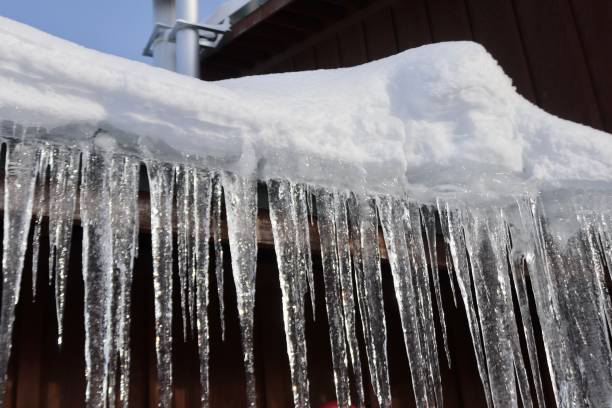Tips to Protect Pipes from Cold Weather: Expert Advice
Tips to Protect Pipes from Cold Weather: Expert Advice
Blog Article
Listed here down the page you might get more quality answers around How To Avoid Freezing Pipes.

Winter can ruin your plumbing, particularly by freezing pipes. Here's exactly how to avoid it from occurring and what to do if it does.
Introduction
As temperatures decrease, the risk of icy pipes rises, potentially leading to expensive repairs and water damages. Understanding exactly how to avoid frozen pipes is crucial for homeowners in chilly environments.
Understanding Icy Pipelines
What causes pipelines to ice up?
Pipes freeze when revealed to temperatures below 32 ° F (0 ° C) for prolonged durations. As water inside the pipelines ices up, it expands, putting pressure on the pipeline walls and possibly triggering them to break.
Risks and problems
Frozen pipelines can bring about supply of water interruptions, property damages, and expensive repair work. Burst pipes can flood homes and cause extensive architectural damages.
Indications of Frozen Water Lines
Determining frozen pipes early can prevent them from bursting.
Just how to recognize frozen pipes
Seek reduced water flow from taps, unusual smells or noises from pipelines, and visible frost on exposed pipelines.
Prevention Tips
Shielding susceptible pipelines
Wrap pipelines in insulation sleeves or utilize warm tape to protect them from freezing temperatures. Concentrate on pipelines in unheated or external areas of the home.
Home heating methods
Maintain indoor spaces properly warmed, especially areas with pipes. Open up closet doors to allow warm air to distribute around pipelines under sinks.
Protecting Exterior Pipes
Garden hose pipes and outside faucets
Separate and drain pipes garden hose pipes prior to winter. Install frost-proof faucets or cover outdoor taps with shielded caps.
What to Do If Your Pipelines Freeze
Immediate actions to take
If you think icy pipelines, keep taps available to alleviate pressure as the ice thaws. Make use of a hairdryer or towels taken in warm water to thaw pipelines gradually.
Long-Term Solutions
Structural adjustments
Consider rerouting pipelines away from exterior wall surfaces or unheated areas. Add added insulation to attics, basements, and crawl spaces.
Updating insulation
Invest in top quality insulation for pipelines, attics, and wall surfaces. Correct insulation assists keep consistent temperature levels and decreases the threat of frozen pipes.
Verdict
Avoiding icy pipes calls for proactive actions and fast reactions. By understanding the reasons, indicators, and safety nets, home owners can protect their pipes throughout winter.
6 Proven Ways to Prevent Frozen Pipes and Protect Your Home
Disconnect and Drain Garden Hoses
Before winter arrives, start by disconnecting your garden hoses and draining any remaining water. Close the shut-off valves that supply outdoor hose bibs and leave the outdoor faucet open to allow any residual water to drain. For extra protection, consider using faucet covers throughout the colder months. It’s also important to drain water from any sprinkler supply lines following the manufacturer’s directions.
Insulate Exposed Pipes
Insulating your pipes is an effective way to prevent freezing. Pipe insulation is readily available at home improvement stores and is relatively inexpensive. Pay close attention to pipes in unheated areas such as the attic, basement, crawl spaces, or garage. Apply foam insulation generously to create a buffer against the cold. You can also wrap your pipes in heat tape or thermostat-controlled heat cables for added warmth.
Seal Air Leaks
Inspect your home for any cracks or openings that could let in cold air. Seal any holes around the piping in interior or exterior walls, as well as the sill plates where your home rests on its foundation. Additionally, make sure to keep your garage door closed unless you’re entering or exiting. Leaving it open creates a significant air leak that can lead to frozen pipes.
Allow Warm Air Circulation
During cold snaps, it’s essential to allow warm air to circulate evenly throughout your home. Leave interior doors ajar to promote better airflow. Open kitchen and bathroom cabinets to help distribute heat consistently around the rooms. If you have small children or pets, be sure to remove any household chemicals or potentially harmful cleaners from open cabinets for safety.
Let Faucets Drip
A small trickle of water can make a big difference in preventing ice formation inside your pipes. When temperatures drop significantly, start a drip of water from all faucets served by exposed pipes. This continuous flow helps prevent the water from freezing. Additionally, running a few faucets slightly can relieve pressure inside the pipes, reducing the chances of a rupture if the water inside does freeze.
https://choateshvac.com/6-proven-ways-to-prevent-frozen-pipes-and-protect-your-home/

We had been brought to that editorial about Preventing and dealing with frozen pipes from a buddy on a different web address. Liked our entry? Please share it. Let somebody else find it. Many thanks for taking the time to read it.
Source Report this page